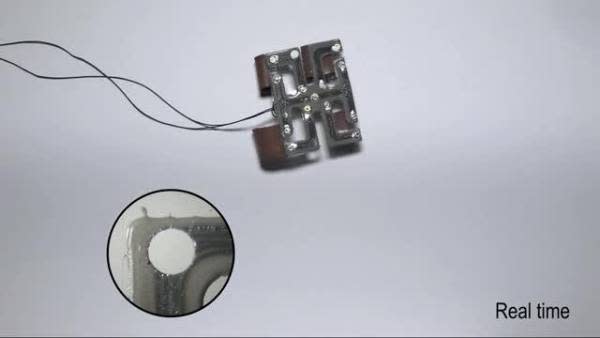elastomer
Latest

Researchers build a self-healing 'robot skin'
Most conventional androids are fairly rigid, susceptible to damage and difficult to repair. However, scientists are determined to (literally) give them thicker skins. They've experimented with soft, deformable circuits that are flexible, and could reduce business expenses in the long term -- but are still prone to tearing and puncturing. The solution to these issues may lie in one recent advancement.

Scientists make an artificial heart out of foam
Artificial hearts only kinda-sorta behave like the real thing. They pump blood, sure, but they're typically solid blocks of machinery that are out of place in a squishy human body. Cornell University thinks it can do better, though: its scientists have developed an artificial foam heart that imitates both the functions and shape of its fleshy counterpart. The key is a new polymer that can be poured into specific shapes, and has pores that let it pump fluids. It's not only soft and stretchable, but more efficient -- you don't need much energy to get liquids moving.

Harvard-designed 'soft robot' shows you how low it can go (video)
It's the stuff of slow-moving robopocalyptic nightmares: a 'soft robot' designed by a team of Harvard scientists that draws inspiration from invertebrates like worms and starfish. The wired 'bot is made from a flexible elastomer material that allows it to squeeze into spaces that are inaccessible for more traditional robots. Inside are chambers that inflate and deflate, allowing the thing to undulate forward. Definitely check out the robot in action after the break.

New materials change color when stressed, making fans of mechanochemical transduction positively giddy
A U.S. Army-funded research project at the University of Illinois has developed a material that changes color when it is met with force or becomes overstressed. Among the examples trotted out in this month's issue of Nature are an elastomer that starts out the color of amber and turns progressively more orange as it's pulled, eventually turning red as it reaches its point of failure and snaps (see the photo on the right). Once relieved of stress, the material reverts to its original color -- and it can be used multiple times. Suggested uses for this technology include parachute cords, climbing ropes, coatings for bridges -- anything, really, that you'd want a heads-up on before imminent failure. Pretty wild, huh? [Warning: Read link requires subscription.][Via CNET]


